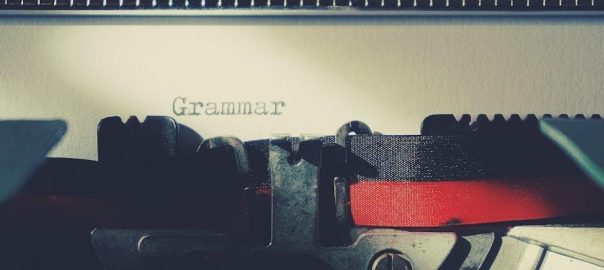Overview of Goldstein Classical Mechanics 3rd Edition
Goldstein’s Classical Mechanics 3rd Edition is a renowned graduate-level textbook, widely acclaimed for its comprehensive coverage of fundamental concepts and advanced topics in the field.
It features updated content, improved clarity, and additional problem sets, making it a cornerstone for both students and researchers in theoretical physics.
The textbook’s structured approach to complex phenomena, such as Lagrangian mechanics and Hamiltonian dynamics, has solidified its reputation as a definitive resource in academia.
Classical Mechanics by Herbert Goldstein, Charles P. Poole, and John L. Safko is a graduate-level textbook renowned for its rigorous and comprehensive treatment of classical mechanics.
First published in 1951, it has become a cornerstone in theoretical physics education, bridging the gap between classical and modern physics.
The 3rd edition retains the core principles while incorporating modern advancements, making it a vital resource for students and researchers alike.
Its structured approach to complex topics, such as Lagrangian and Hamiltonian mechanics, ensures clarity and depth, solidifying its reputation as an indispensable academic tool.
1.2 Key Features of the 3rd Edition
The 3rd edition of Goldstein’s Classical Mechanics is distinguished by its updated content, enhanced clarity, and modernized approach to fundamental concepts.
It includes expanded coverage of topics like chaos and the transition from classical to quantum mechanics, ensuring relevance to contemporary research.

The textbook incorporates improved problem sets, with additional exercises in areas such as nonlinear dynamics and relativistic mechanics.
Its structured format provides a logical progression from basic principles to advanced theories, making it an invaluable resource for graduate-level studies.
By bridging classical and modern physics, the 3rd edition remains a cornerstone for students and researchers seeking a deep understanding of the subject.
1.3 Reputation and Usage in Academia
Goldstein Classical Mechanics 3rd Edition is widely regarded as a leading textbook in its field, earning recognition for its rigorous and comprehensive approach to classical mechanics.
It is a standard graduate-level textbook adopted by universities worldwide, known for its clarity and depth in explaining complex concepts.
Academics and students alike rely on this edition due to its balanced blend of theoretical foundations and practical problem-solving.
Its widespread adoption in prestigious institutions underscores its reputation as a definitive resource for advanced studies in physics.
The textbook is often recommended by instructors and serves as a primary reference for research and coursework.
Its enduring popularity reflects its ability to bridge fundamental theories with contemporary applications, making it indispensable in academic settings;
For students seeking mastery, the solutions PDF is a valuable companion to this esteemed textbook.

Importance of Solutions Manuals in Learning
Solutions manuals are crucial for understanding complex problems, offering step-by-step guidance and clarifying difficult concepts, thereby enhancing learning and problem-solving skills effectively.
2.1 Role of Solutions in Problem-Solving
The solutions manual plays a pivotal role in problem-solving by providing detailed, step-by-step explanations for complex problems in Goldstein Classical Mechanics 3rd Edition.
- It helps students understand how to approach and solve challenging physics problems systematically.
- By breaking down intricate concepts into manageable parts, it clarifies the thought process behind each solution.
- Students can identify common mistakes and learn how to avoid them by comparing their work with the provided solutions.
- Regular practice with the solutions manual enhances problem-solving skills, boosting confidence and understanding of classical mechanics.
Ultimately, it serves as an essential tool for mastering theoretical and practical aspects of the subject.

2.2 Enhancing Understanding of Complex Concepts
The solutions manual for Goldstein Classical Mechanics 3rd Edition is invaluable for deepening the understanding of complex theoretical concepts.
- It provides detailed derivations and explanations, making abstract ideas more accessible and concrete.
- By presenting alternative approaches to solving problems, it broadens students’ perspectives and reinforces key principles.
- Difficult topics, such as Lagrangian mechanics or Hamiltonian dynamics, are clarified through step-by-step solutions.
- Visual aids like diagrams and equations help visualize complex systems and their behaviors.
- Students can identify gaps in their knowledge and address them systematically.
Overall, the solutions manual acts as a bridge between theory and application, fostering a deeper grasp of classical mechanics.

Structure and Content of the Solutions PDF
The solutions PDF is organized chapter-wise, aligning with the textbook’s structure. It includes detailed solutions, derivations, and explanations for problems, ensuring clarity and comprehensiveness.
- Covers all chapters and topics systematically.
- Provides clear, step-by-step explanations.
- Includes equations, diagrams, and key concepts.
It serves as a comprehensive resource for understanding classical mechanics problems.
3.1 Chapter-Wise Solutions
The solutions PDF is meticulously organized to follow the textbook’s chapter structure, ensuring easy navigation for students. Each chapter contains detailed solutions to end-of-chapter problems, aligning perfectly with the content in Goldstein’s 3rd edition. This systematic approach allows learners to focus on specific topics without confusion. Key features include:
- Alignment with textbook chapters for seamless reference.
- Coverage of all problem types, from basic to advanced.
- Detailed step-by-step solutions for clarity.
- Inclusion of equations, diagrams, and key formulas.
- Suitable for both self-study and homework assistance.
This structure enhances accessibility, making it easier for students to understand and apply concepts effectively.
3.2 Detailed Derivations and Explanations
The solutions manual provides comprehensive derivations for complex problems, ensuring students grasp the logical flow of solutions. Each problem is broken down into clear, step-by-step explanations, making it easier to understand intricate concepts. Key equations are highlighted, and derivations are accompanied by brief comments to clarify critical steps. This approach helps students follow the reasoning process and identify potential pitfalls. The manual also includes graphical illustrations where necessary, enhancing visual understanding. By presenting detailed derivations, the PDF serves as an invaluable resource for students seeking to master both fundamental and advanced topics in classical mechanics. This depth of explanation fosters a deeper understanding of the subject matter, making it an essential companion for academic success.

Accessing the Goldstein Classical Mechanics 3rd Edition Solutions PDF
The solutions manual can be accessed through authorized academic sources or purchased online. Free versions are also available on educational forums and resource-sharing platforms.
4.1 Authorized Sources and Purchase Options
The Goldstein Classical Mechanics 3rd Edition Solutions PDF can be legally accessed through the publisher’s official website or authorized academic retailers. Many universities and colleges provide access to the solutions manual as part of their curriculum resources. Additionally, online platforms like Amazon, Barnes & Noble, and eBook stores offer the PDF for purchase, often bundled with the main textbook. Purchasing from these sources ensures that you receive a high-quality, verified copy of the solutions manual. Some retailers also offer digital access, making it convenient for students to study on multiple devices. For international students, authorized distributors in various regions provide access to the solutions PDF. Always prioritize purchasing from reputable sources to avoid unauthorized or incomplete versions.
4.2 Free Resources and Online Platforms
Several online platforms offer free access to the Goldstein Classical Mechanics 3rd Edition Solutions PDF, though these may not always be legally authorized. Websites like Google Scholar, ResearchGate, and GitHub often host shared copies uploaded by students or educators. Additionally, online forums such as Reddit and Physics Forums frequently discuss and share links to free resources. Some universities also provide access to the solutions manual through their libraries or course portals. Open educational repositories and online communities may offer downloadable versions, though the quality and completeness of these files can vary. While these options are convenient, they may lack the official validation and updates of the publisher’s version. Always verify the source and consider supporting the authors by purchasing the official copy when possible.

Effective Use of the Solutions Manual
The Goldstein Classical Mechanics 3rd Edition Solutions Manual is a valuable tool for self-study and problem-solving. Use it to verify solutions, understand complex derivations, and improve analytical thinking. Avoid relying solely on answers; instead, work through problems first and refer to the manual for clarification. This approach enhances understanding and retention of key concepts in classical mechanics, making it an indispensable supplement to the main textbook.
5.1 Strategies for Self-Study
For effective self-study using the Goldstein Classical Mechanics 3rd Edition Solutions PDF, adopt a structured approach. Begin by setting clear learning goals for each chapter, focusing on understanding fundamental principles. Create a study schedule that allocates time for both problem-solving and reviewing solutions. Prioritize tackling difficult topics first, as they often form the foundation for later chapters. Work through problems independently before consulting the solutions manual to avoid dependency. When reviewing solutions, pay attention to the reasoning and derivations to grasp problem-solving techniques. Regularly review and practice unsolved problems to reinforce concepts. Use the manual as a reference to clarify doubts but ensure active engagement with the material. This methodical approach enhances comprehension and retention, making self-study more productive and efficient.
5.2 Avoiding Overreliance on Solutions
To avoid overreliance on the Goldstein Classical Mechanics 3rd Edition Solutions PDF, establish a balanced study routine. Attempt problems independently before referring to the solutions to foster critical thinking. Use the manual primarily for verification or when stuck, rather than as a crutch. Focus on understanding the underlying concepts and derivations instead of memorizing solutions. Regularly test yourself with unsolved problems to build problem-solving confidence. Limit reliance on the solutions manual by actively engaging with lecture notes, textbooks, and additional resources. Encourage peer discussions to explore alternative problem-solving methods. This approach ensures that the solutions manual complements learning without undermining the development of independent problem-solving skills.

Supplementary Resources for Comprehensive Learning
Enhance your understanding with companion websites, online forums, and video lectures. These resources provide additional practice problems and interactive tools to deepen your grasp of classical mechanics.
6.1 Companion Websites and Forums
Companion websites and forums are invaluable resources for students studying classical mechanics. Many textbooks, including Goldstein’s, offer official companion sites with additional materials such as practice problems, interactive simulations, and lecture notes. These platforms often include discussion forums where students can ask questions, share insights, and collaborate on challenging topics. Websites like Physics Forums or Reddit communities dedicated to physics provide spaces for peer-to-peer learning and expert guidance. Additionally, some instructors create course-specific forums or use platforms like Discord to foster engagement. These resources not only supplement the textbook but also offer a dynamic environment for clarifying doubts and exploring concepts in depth. By leveraging these tools, students can enhance their understanding and stay connected with a broader academic community. Regular participation in such forums can significantly improve problem-solving skills and confidence in the subject.
6.2 Video Lectures and Tutorials
Video lectures and tutorials are excellent supplementary resources for mastering classical mechanics. Platforms like YouTube, Coursera, and edX offer high-quality lecture series that align with textbooks like Goldstein’s. These videos provide detailed explanations, visual demonstrations, and step-by-step solutions to complex problems. Many university professors upload their lecture recordings, which can be a valuable resource for self-study. Additionally, websites like 3Blue1Brown and Khan Academy feature engaging animations and simplified explanations of advanced concepts. These resources are particularly helpful for visual learners and those who benefit from auditory instruction. By combining video tutorials with the Goldstein textbook and its solutions manual, students can gain a deeper understanding of the material. Regularly reviewing these lectures can also help reinforce concepts and improve problem-solving skills, especially when tackling challenging topics in classical mechanics.

Common Challenges in Classical Mechanics
Classical mechanics presents challenges like abstract thinking, complex mathematical derivations, and applying theories to real-world problems. Students often struggle with conceptual understanding and problem-solving techniques.
7.1 Difficult Topics and Concepts
In Goldstein’s Classical Mechanics, challenging topics include Lagrangian and Hamiltonian mechanics, which require advanced mathematical skills and abstract thinking. Non-inertial frames and rotating systems introduce fictitious forces like the Coriolis effect, complicating problem-solving. Dynamics of rigid bodies involve complex rotational motion and moments of inertia. Scattering processes and perturbation theory demand a strong grasp of differential equations and integral transforms. Additionally, relativistic mechanics introduces four-vectors and the stress-energy tensor, requiring a conceptual leap. The mathematical prerequisites, such as calculus and linear algebra, add to the difficulty. The solutions manual aids in understanding these concepts through detailed derivations, helping students overcome these challenges effectively.
7.2 Tips for Mastering the Subject

To excel in classical mechanics, focus on consistent practice and problem-solving. Start by thoroughly understanding foundational concepts like Newtonian mechanics and conservation laws. Regularly review derivations and key equations to build intuition. Utilize the solutions manual strategically to verify your approaches and learn from mistakes. Break complex problems into smaller, manageable parts and visualize scenarios using diagrams. Prioritize understanding over memorization, as this fosters deeper insight. Engage with study groups or forums to discuss challenging topics and gain diverse perspectives. Schedule regular study sessions to maintain momentum and reinforce learning. By combining diligent effort with strategic use of resources, students can master even the most demanding aspects of Goldstein’s Classical Mechanics.
